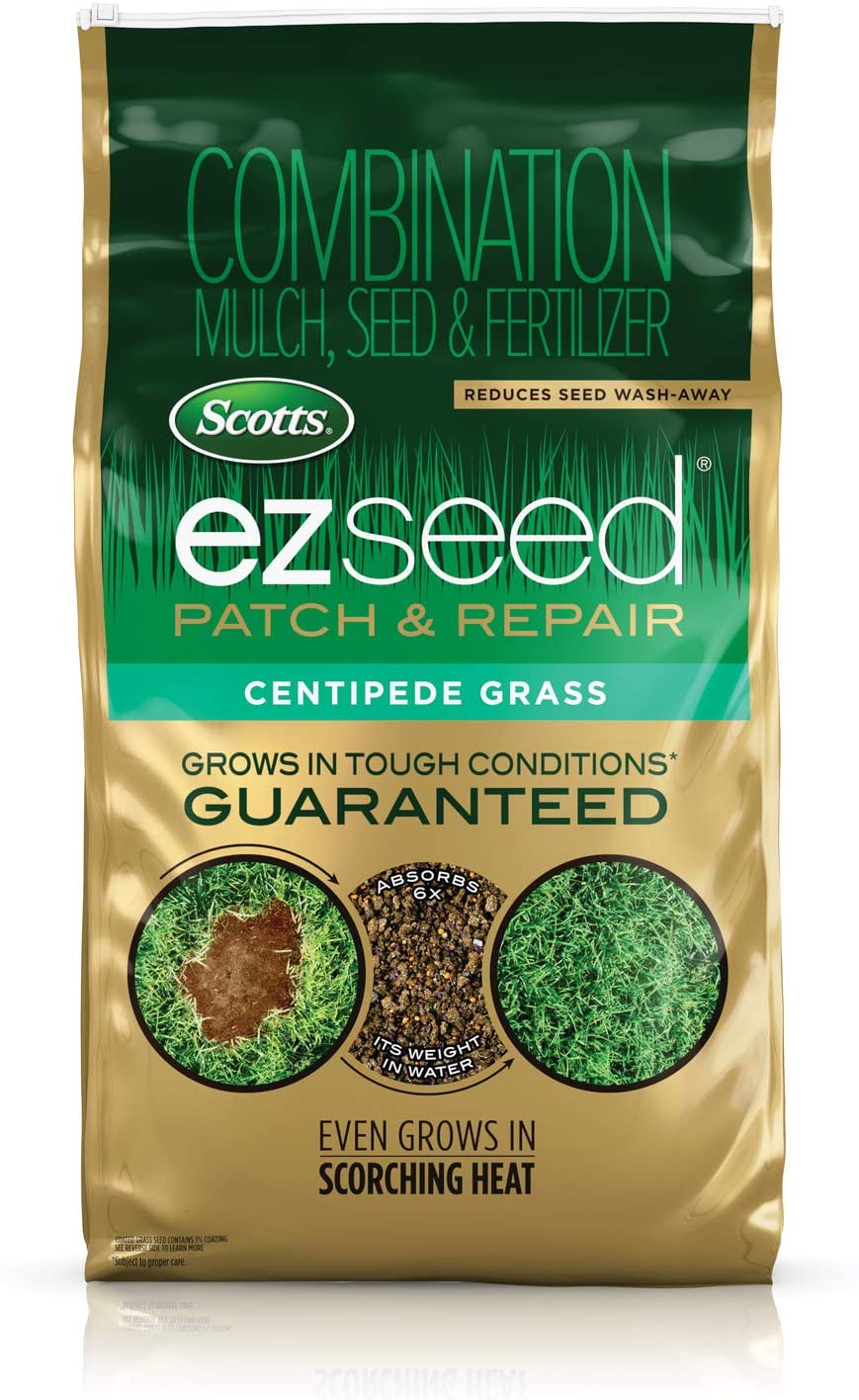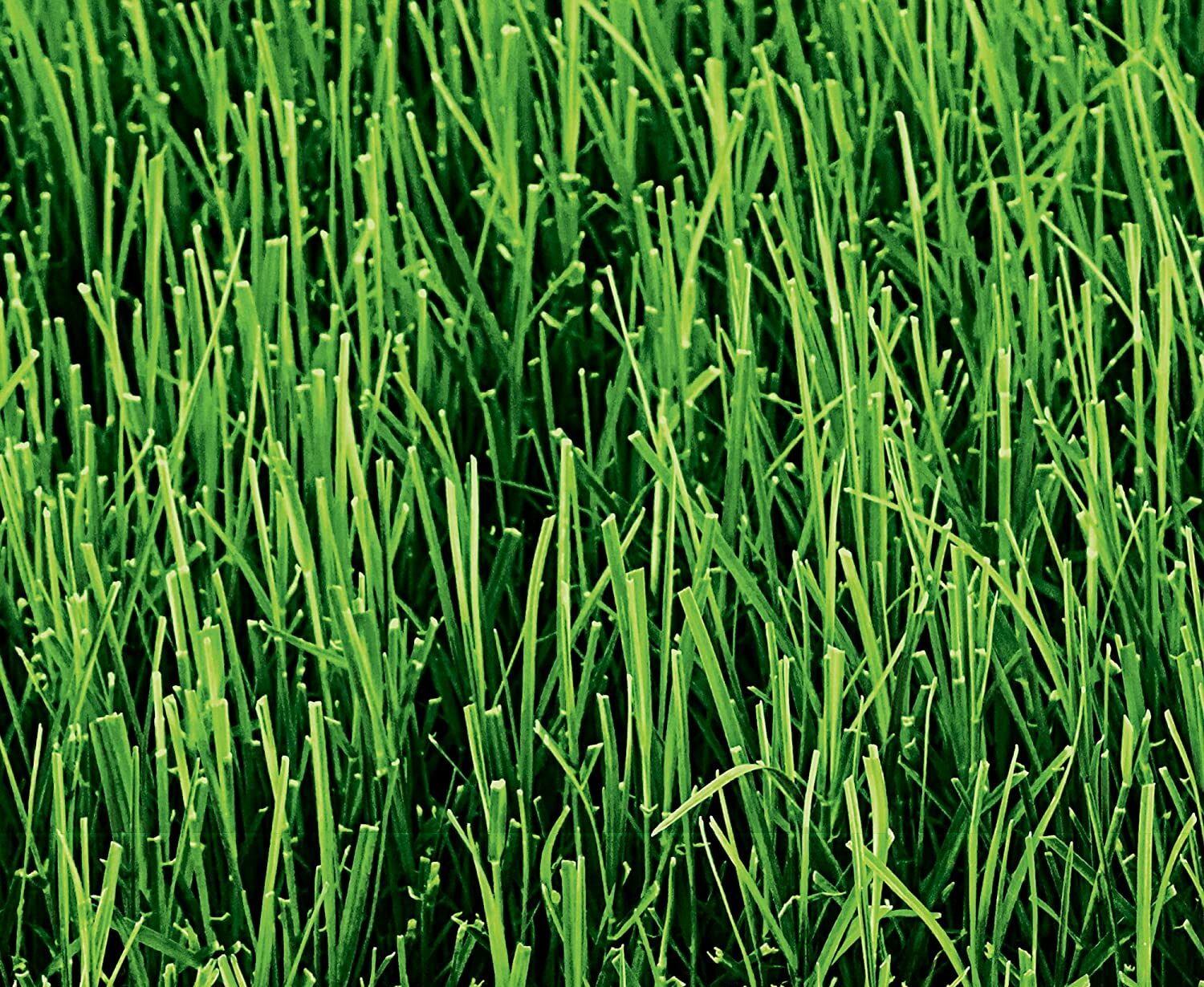- Best Cultivator Attachments Guide - December 23, 2021
- How to Find the Best Leaf Blower Attachment - December 23, 2021
- Best 21 Inch Lawn Mower Blade Options - December 18, 2021
You might be feeling it’s time to transform your yard into something to truly awe at. The heart of any lawn is the grass. If you want soft grass that will act as a cushion for your feet as you walk across it, then I implore you to read further. Today I’ll be comparing Centipede grass vs Bermuda grass turf.
I’ll explain the process of planting the two grass types and how to properly care for them. Hopefully, by the end of this article, you’ll have the perfect grass for your lawn.
Main Differences Between Centipede Grass vs Bermuda Grass
The main differences between Centipede grass vs Bermuda Grass are:
- It will take up to 21 days for Bermuda Grass to germinate, whereas it will take Centipede grass up to 28 days.
- Centipede Grass is low maintenance, whereas Bermuda Grass has a crazy growth rate and will need a lot of maintenance.
- Centipede Grass can grow all year round as long as it isn’t in freezing climates, whereas Bermuda Grass is usually grown late-Spring to mid-Fall.
Centipede Grass Characteristics and Traits
Centipede grass has great resistance against hot climates, and it’s popular due to its low maintenance.

It grows best on sandy soils that have a smaller number of nutrients. The pH levels can be as low as 4.5. In comparison to other grass types, it’s incredibly low. At most, pH levels should be 6.0 for proper growth. Bermuda grass should be grown in grass hardiness zones 7 to 10. Soil temperatures should be between 70° to 95° Fahrenheit to keep the grass from going dormant.
It’s also great at surviving in the winter and could potentially continue to stay green in cold climates. It can take up to 28 days to germinate. In comparison to other warm-season grasses, this is a long germination period.
How to Plant Centipede Grass
Before you plant your grass, you should aerate your lawn. This will allow nutrients, water, and air access to your bluegrass. If you’re looking for an aerator, we have the perfect article about the best aerators available in 2021.
Once you’ve laid the seeds over your yard, I recommend feeding it fertilizer as this will help towards a healthier growth period. Water your lawn regularly during the germination period. After around three weeks, you’ll have excellent centipede grass.
How to Care for Centipede Grass
Watering and Fertilizing
Centipede grass doesn’t require water and fertilizer every week. Instead, you should only water your Centipede grass if it starts to show signs of water stress. This will happen most in times of drought. If you are suffering from drought, water deep into the soil once a week. This will be better than watering at a shallow level several times.
You should only fertilize your grass twice a year! Once during the Spring and then again in Fall. Giving your Centipede grass too much fertilizer will only damage it.
Mowing
Centipede grass should be mowed once a week. You should mow it to 1.5 to 2.0 inches.
Centipede Grass Pros and Cons
Pros:
- Centipede Grass is extremely low maintenance
- It can survive in cold climates and winter conditions
- Is resistant to heat
Cons:
- It takes longer than other warm-season grasses to germinate
- It doesn’t tolerate a lot of foot traffic
- Needs constant sunlight
The Case for Centipede Grass
The biggest selling point for Centipede Grass is the low maintenance factor. And it can survive in a lot of different weather conditions. However, it does require a lot of sunlight to get the best growth, and it takes a long time for germination.
There are a few things you should consider before growing Centipede grass:
- First, do you get enough sunlight?
- Will you be able to mow your lawn at least once a week?
- Do you have the right tool for aeration?
- Has your soil got a pH level between 4.5 and 6.0?
- Is your grass hardiness zone 7 to 10?
- Is your soil temperature above 70° Fahrenheit?
Recommended Product
Scotts Centipede Grass Seed and Mulch

Scotts Centipede Grass Seed should work perfectly for your lawn. This grass seed has been formulated to provide a medium-bladed texture and excellent drought resistance in sunshade areas.
Bermuda Grass Characteristics and Traits
Bermuda Grass will thrive in warmer weather, the recommended soil temperature is between 75 and 95 Fahrenheit, and the pH level should be between 5.8 and 7. Most important of all is that you’re growing Bermuda Grass in grass hardiness zones 7 through 10.
The roots can go as deep as 6 feet which means it can easily survive in drought conditions which is impressive compared to other warm-weather grass types.

Bermuda Grass can grow in different qualities of soil, which makes it accessible to more people. It can withstand a lot of foot traffic without taking damage, and when it does take damage, it will quickly repair itself. However, the aggressive growth of this grass can be a burden.
The quick growth rate can get out of control easily, which will, unfortunately, lead to the grass spreading to parts of your yard it shouldn’t, such as flowerbeds. This means you’ll need to keep on top of this grass, constantly looking after it.
This aggressive growth rate is due to the Stolon, which is basically a duplicate of an original stem. It will create its own root system eventually and then repeat the same problem. The growth can also be blamed on the Rhizome, a stem that goes down into the soil while putting new stems above the ground.
How to Plant Bermuda Grass
Before planting, use a rake on the soil so that the seeds have good exposure to the soil’s surface. You can then start planting the seeds across your lawn.
During the germination period, you should water your plants 3 or 4 times a week. Be sure not to drown the seeds in water. Use about ⅛ inch of water each time you do so. Your germination period will be over after 14 to 21 days.
How to Care for Bermuda Grass
Looking after Bermuda Grass is a big task. As mentioned before, it has a rapid growth rate, so you’ll need to do a lot to keep on top of this grass.
Watering
You should give your water 1 ½ inches of water at the most. You only need to water it once every three days for healthy growth. The grass will begin to brown if it doesn’t get enough water.
Mowing
You should only mow Bermuda Grass once a week at 1 ½ inches. If it becomes too long, your grass will begin to brown as part of the stem won’t get sunlight.
Bermuda Grass Pros and Cons
Pros:
- Can withstand a lot of heavy foot traffic
- Quickly repairs itself
- Growth is incredible in warm climates
- Can survive in droughts
- It can be planted in a large variety of different soils
Cons:
- Quick growth rate can affect other parts of your yard
- It is relatively high maintenance
- Can’t stand colder climates
- Won’t survive in the shade for long
- Will need quite a bit of watering
The Case for Bermuda Grass
Bermuda Grass is great in warm climates, and if you’re going to have many people in your yard at once, it won’t receive a lot of damage. However, it does require a lot of maintenance due to its growth rate.
Before planting Bermuda Grass, however, there are a few things to think about:
- Can you keep control of its quick growth rate by mowing at least once a week?
- Are your soil pH levels between 5.8 and 7?
- Is your soil at a temperature between 75° and 95° Fahrenheit?
- Are you in a grass-hardiness zone between 7 and 10?
- Can you water your grass once every three days?
- Do you get a lot of sunlight?
Recommended Product
Pennington Bermuda Grass Seed

The Pennington Bermuda Grass Seed is naturally more drought-resistant than other brands, and for that reason, I recommend you pick up this product over others. It is better in comparison to other seeds available.
Alternatives to Centipede Grass and Bermuda Grass
These are two of the best warm-season grass types. However, there are plenty more options to pick from. The ones below are excellent choices!
Zoysia Grass

Zoysia is great at resisting conditions like drought and heavy foot traffic. It grows better in heat however, it is better at resisting cold weather when compared to other warm-season grasses. We’ve also compared Bermuda Grass and Zoysia. So if you want a deeper look at it, I recommend giving the post a read.
Bahia Grass

Bahia grass is low maintenance and is durable to an extent. It is more likely to get damaged from heavy foot traffic than Bermuda Grass. It grows best when exposed to full sunlight and is great at resisting the effects of a drought. At the start of the growth period, it could be affected badly by weeds, so for the first few weeks, you’re likely going to be looking after it a lot.
St. Augustine Grass
St. Augustine Grass is the best warm-season grass for yards that get a lot of shade. It will also resist heavy foot traffic. It’s also got a very short germination period of 7 to 14 days. It’s very low maintenance. St. Augustine Grass cannot be grown in the same way others in this list are. Instead, they need to be grown from laying sod or planting plugs.
If you’re interested in reading more about this grass type, I recommend reading our article on Bermuda Grass vs St. Augustine Grass.
FAQs
Answer: Cutting sod isn’t too difficult, as long as you have the tools you need. Using a shovel or an edger makes for some manual labor, but you can get it done with some muscles and friends. It’s also an affordable way to remove the grass sod without having to rent any tools.
Answer: There will be some instances in which renting a sod cutter is worth it. If it’s going to take you several hours to cut and remove your sod, you can simply rent a sod cutter for a day and knock it out more quickly.
Even better, check with your neighbors and time your rental when they’re ready to remove their sod, too, and you can split the cost of the rental and help each other get it done.
Answer: Once you remove your sod and you’re ready to loosen and turn the soil, you can use your sod cutter for that, too. If you’re removing sod to plant something new, maximize your sod cutter rental by using it to loosen the soil and prep the yard for new growth.
Answer: One of the most critical steps in prepping your ground for new sod is removing the old. This helps the new lawn build a strong root system. Completely removing old grass gives your new grass a better chance to spread and grow into healthy turf.
Centipede grass vs Bermuda grass: Concluding Thoughts
Out of these two grass types, if you’re looking for something durable, you’ll want to go with Bermuda Grass (such as this one). However, it will require a lot of maintenance because of the quick growth rate. So if you’re looking for low maintenance, go with Centipede Grass.
Both have their merits. It really depends on the grass that suits your yard best and how much work you want to put into your lawn. Thank you for taking the time to read this article. If you’re looking for a cool-season grass type, I recommend reading Tall Fescue vs Bluegrass.

